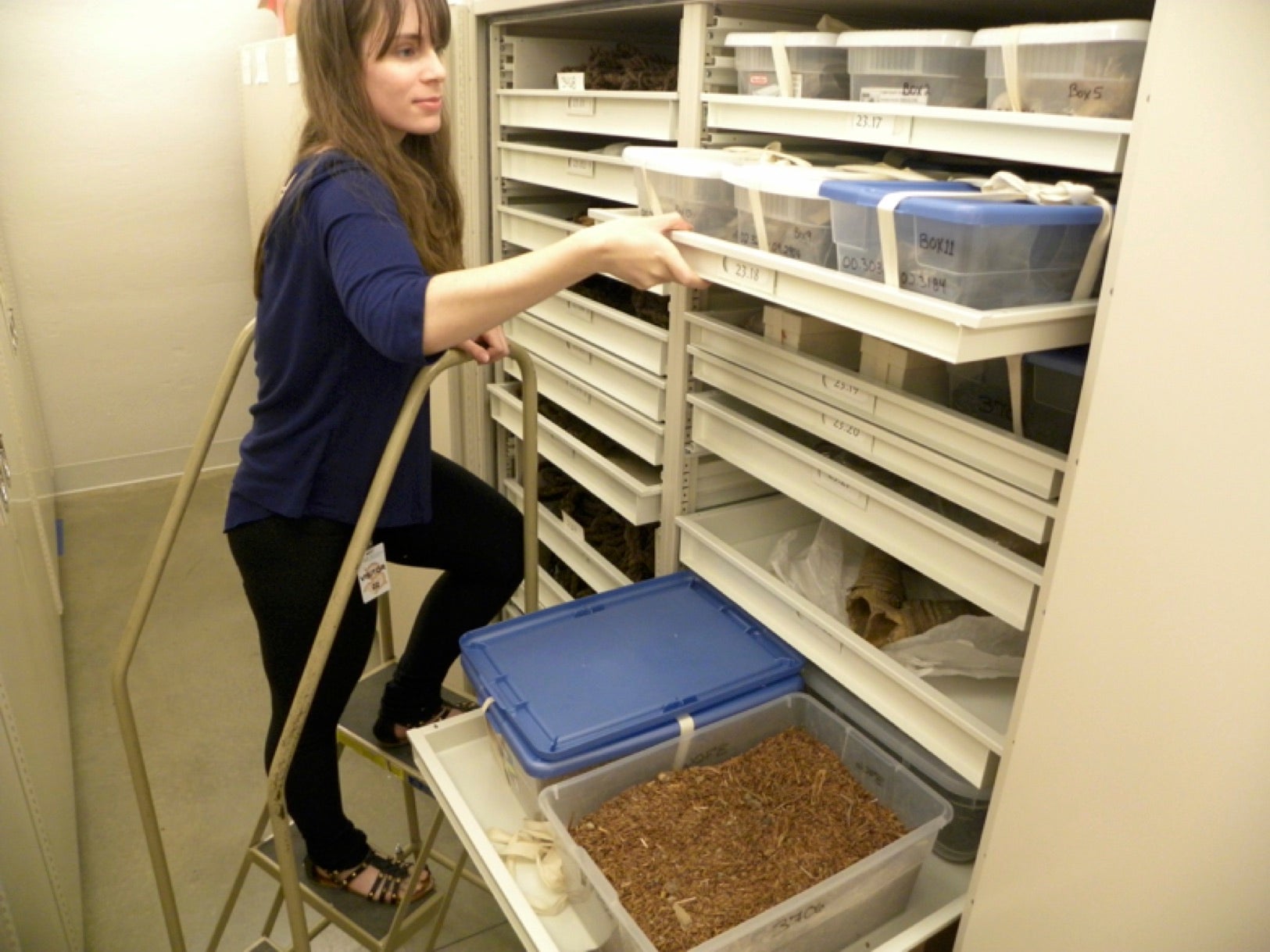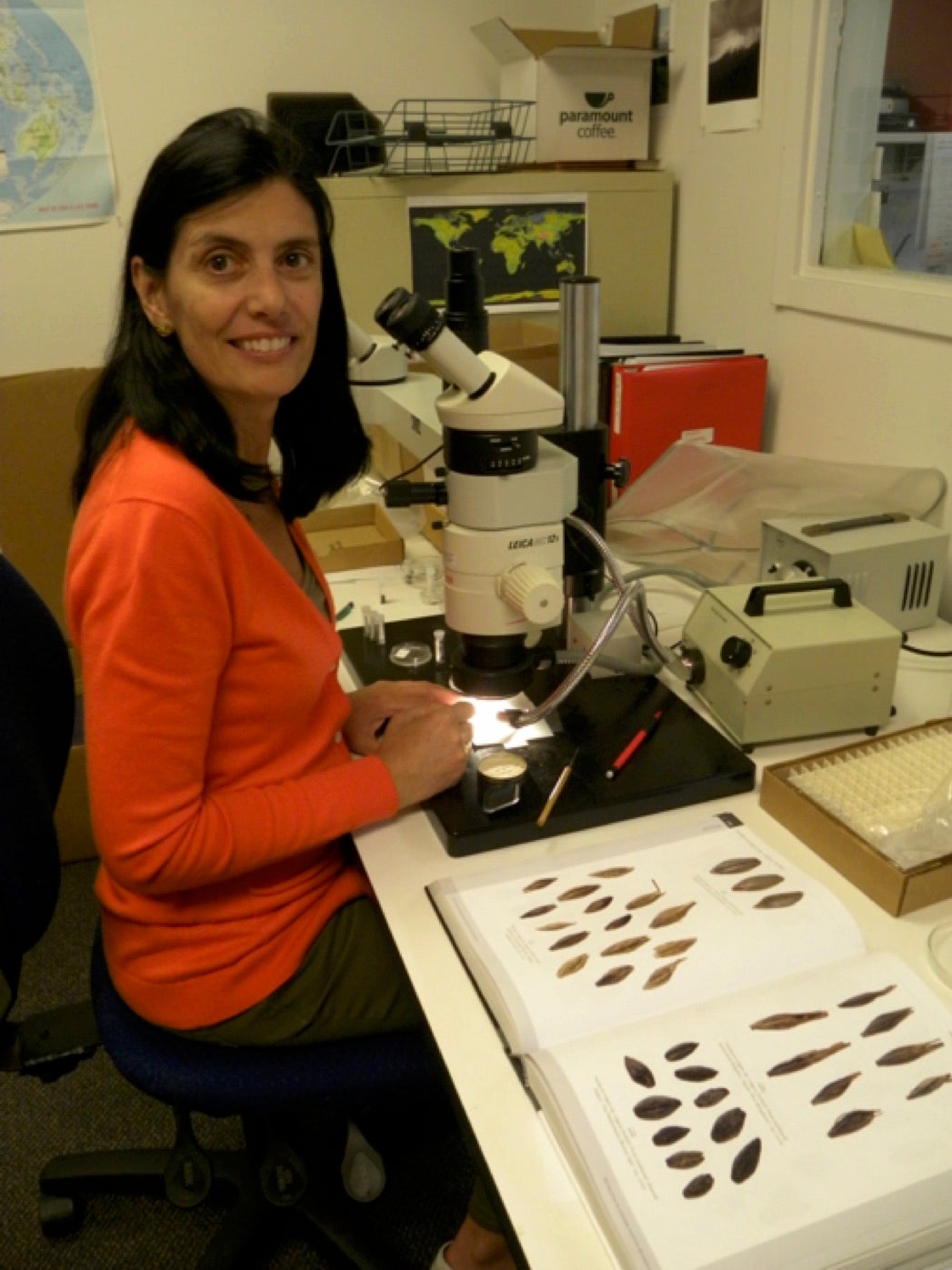The dry climate of ancient Egypt allowed the preservation of an incomparable wealth of organic material. Working on plant remains from Karanis is an archaeobotanist’s paradise: I am not used to such exceptional preservation! I am also very much surprised by the attention paid by the excavators, almost a century ago, to the detailed collection of botanical samples, practice that has yet to become routine in contemporary archaeological investigations.
Plant remains from the different buildings in Karanis provide important supporting evidence for our reconstruction of the lived experience of its ancient inhabitants. They are a critical piece of the puzzle for our understanding of the economy, subsistence and diet. Their spatial distribution informs us about the use of domestic space and storage practices.
The study of a house and a granary is a good starting point because offers important complementary insights: from household level storage and consumption patterns to local, as well as regional, agricultural production and state economy.
In addition, one aim of our archaeobotanical research is to understand former agricultural systems. Archeobotanical material may include evidence about land-use strategies, such as ploughing, weeding and irrigation, as well as information on the different stages of crop processing. Different kind of by-products are created by the processing of cereal crops after the harvest, each containing varying quantities of chaff, straw, and weed seeds. Recent research has shown how, especially in arid environments, chaff and straw represented a valuable resource and an economic commodity. Indeed, this material was not discarded: several of these by-products were used as fuel, fodder or temper and later became included as debris in the archaeological deposits. Documentary sources from Roman Egypt clearly identify the importance of chaff and straw as fuel in the heating, for example, of the public baths; pasture and grazing land is another scarce resource in arid regions, and the use of chaff, straw and agricultural residues as fodder is common practice for working animals.
One other main source of botanical remains at Karanis is coming from the decaying of building material. The extensive use of mudbrick, in which cereal chaff and straw were the principal tempering material, generated a ubiquitous presence of these remains in the archaeological deposits.
 Assessing Karanis plant remains in the Kelsey museum collections. In the forefront a box of barley seeds with chaff and remains of its straw.
Assessing Karanis plant remains in the Kelsey museum collections. In the forefront a box of barley seeds with chaff and remains of its straw.
The Kelsey Museum holds only a fraction of the plant material that was collected during the excavations. Some of the botanical samples were left in Cairo and are now stored at different institutions, including the Museum of Agriculture.
We started our survey with samples from the house C 137.One in particular attracted my curiosity: it was labeled as “poppy seeds”. Again, I was amazed to see that in the Thirties they were collecting seeds big – actually small as a pin head, just over 1 mm.
Papaver seeds are very easy to identify: they have a very characteristic shape and surface pattern. So I was even more amazed when I took some of the specimen up in the lab to be examined at the microscope and, surprise! they were not poppy seeds at all!!
I was dealing instead with some remains belonging to the cabbage family. A direct comparison with modern reference material will allow a more precise taxonomical identification; a first check suggests either Brassica oleracea or Brassica nigra.
 Identifying the archeobotanical remains
Identifying the archeobotanical remains
Recent genetic studies proposed two basic evolutionary pathways in the cabbage family: one gave rise to Brassica nigra and Sinapis arvensis while the other to Brassica oleracea and Brassica rapa Cultivated Brassica oleracea includes all cole crops. Various kales constitute a highly diverse group, and represent the primitive morphotypes of cultivated B. oleracea from which cabbage, broccoli, cauliflower, have later evolved.
Brassica seeds from house C 137
Various attempts have been made to locate the area of domestication of Brassica oleracea crops. Contrasting hypotheses suggest either a North Atlantic or a Mediterranean origin, however linguistic, literary, and historical evidence points towards the area of Central and East Mediterranean. Early finds of Brassica or Sinapis go back to Dynastic Egypt. Brassica nigra, black mustard, main ingredient of the Dijon mustard, was grown predominantly for its seeds although their leaf is also edible and became a very common spice in Hellenistic and Roman times. In 301 CE, the emperor Diocletian fixed a maximum price for its seeds and powder. B. nigra is nowadays a widespread weed in winter crops in Egypt.




